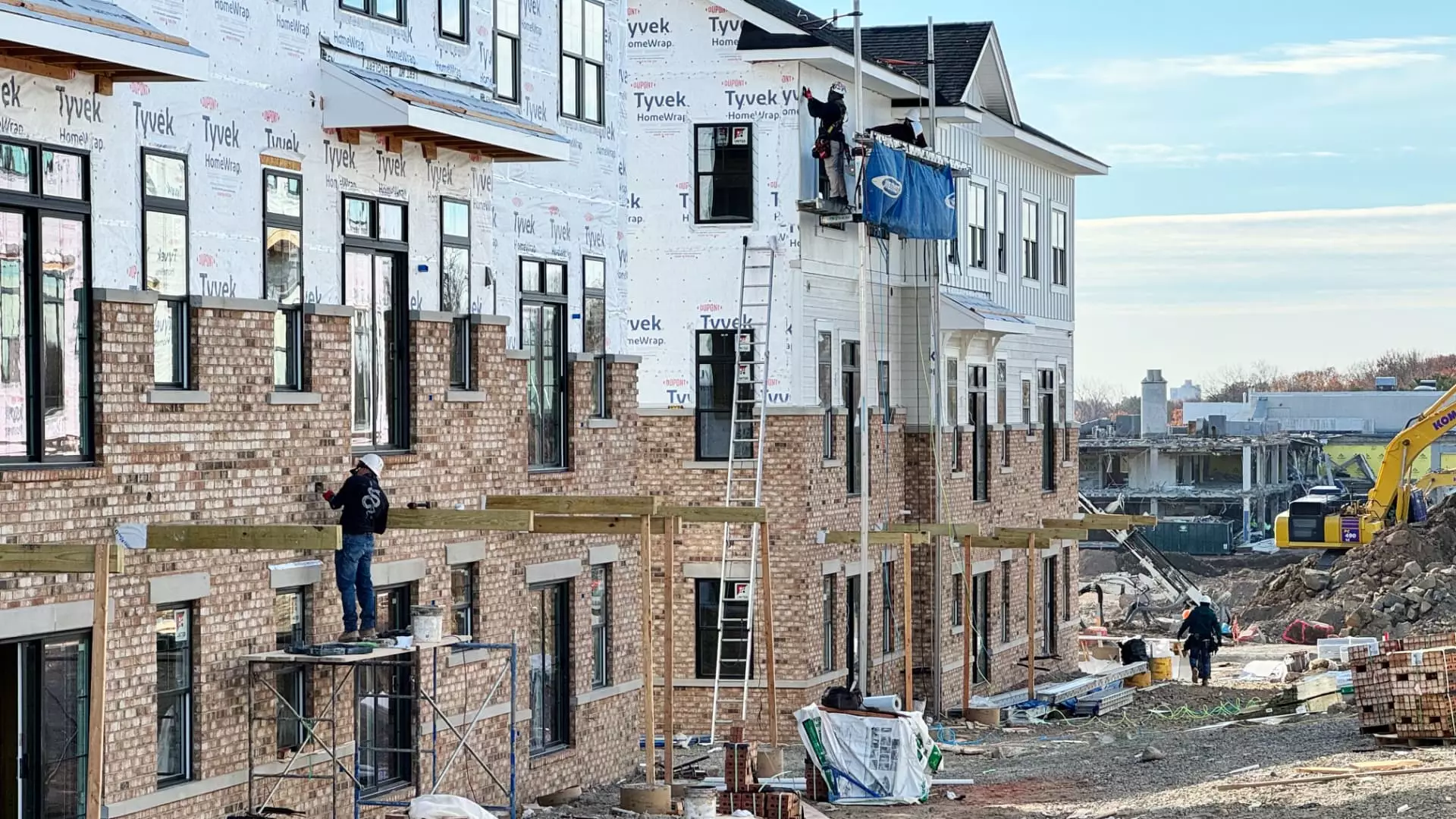When it comes to the economic policies of President-elect Donald Trump, one of the biggest challenges he faces is the persistently high inflation rate, particularly as it relates to housing costs. The consumer price index (CPI), which serves as a key measure of inflation, reflects that shelter costs constitute a significant component, accounting for approximately one-third of its total weight. Recent reports illuminate this multifaceted issue, showcasing both headwinds and potential tailwinds in the battle against inflation driven by housing expenses.
Despite some signs of moderation in shelter costs, such as a reduced annual increase of 4.7% compared to prior years, the reality remains stark: this is still a considerable jump reminiscent of periods when inflation was rampant. In fact, the last time we witnessed such sustained growth outside the Covid context was in the early 1990s, a stark reminder of volatile economic climates. The Bureau of Labor Statistics (BLS) reported that housing contributed to nearly 40% of the monthly price hikes witnessed recently, surpassing even food prices—an indicator that housing remains a critical area for immediate economic focus.
Economists like Lisa Sturtevant, the chief economist at Bright MLS, underscore the expectation that the growth rates of rents would eventually subside over time. However, this downward trend appears excruciatingly sluggish. The complexities surrounding current housing inflation are multi-layered; after peaking in March 2023, housing costs did exhibit a descending trend, yet the speed of this decline fails to inspire confidence. The foundational issue lies in a supply-demand imbalance that originated in the early days of the pandemic—a condition that continues to plague the housing market.
Realtor.com data revealed that housing supply levels in November hovered around 17% lower than five years ago. Coupled with skyrocketing average rent prices—reportedly close to $2,009 a month—the overall affordability crisis grows more severe. Furthermore, despite the Federal Reserve’s attempts to manage interest rates to stimulate a responsive housing market, the net effect has been somewhat counterproductive. Notably, while the Federal Reserve may have reduced its benchmark borrowing rates recently, mortgage rates remain stubbornly high, complicating the hopes for a resurgence in housing stability.
Challenges Posed by Policy Proposals
President-elect Trump’s proposed economic measures, while aimed at stimulating overall growth, could inadvertently contribute to persistent inflationary pressures. While tax breaks and tariffs are designed to boost the economy, analysts warn that certain initiatives may conflict with the objective of achieving a sustainable, low-inflation environment. Economists such as Sturtevant caution against the prospective inflationary impacts of deregulation in the housing sector, which Trump has championed during his campaign.
Although the intention behind easing regulations may facilitate construction and lower barriers for builders, it does little to address the heart of the housing supply crisis in the near term. Once again, the entangled nature of monetary policy becomes apparent, as reductions in interest rates would ideally lead to more affordable housing—yet such a sequence cannot be achieved until shelter costs drop, creating a sort of economic paradox.
Responses from financial markets, notably from analysts and economists on Wall Street, remain cautiously optimistic. Some believe that rent normalization is on the horizon, echoing a return to inflation levels more in line with the Federal Reserve’s 2% target. Bank of America economist Stephen Juneau appears buoyant about evolving market conditions, while Evercore ISI’s Krushna Guha sees the latest housing data as potentially favorable news for the Fed. However, these optimistic sentiments clash with the reality highlighted by finance professionals like Robert Frick, who dissects how shelter expenses continue to propel higher prices throughout the economy.
As President-elect Trump embarks on his financial path, housing issues unfold as a dual-edged sword, requiring a calibrated approach to policy. The interconnectedness of housing costs and inflation places Trump in a precarious position, where gains in one area could be undermined by setbacks in another. The tug-of-war between the need for lower shelter costs and the influence of rising interest rates unveils a complex landscape, leaving the administration to navigate a labyrinth of economic challenges ahead.
As Trump prepares to take office, he will need to strategize carefully to manage the housing crisis while driving forward economic stability in a climate already wrought with inflationary pressures. Addressing supply chain challenges and housing policies will be paramount if the administration hopes to deflate the rising pressures of overall inflation effectively.

